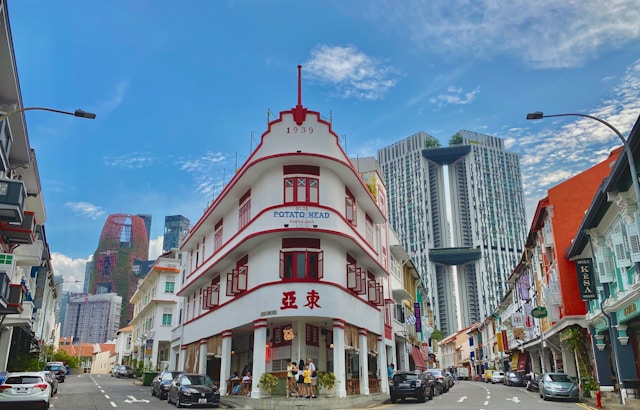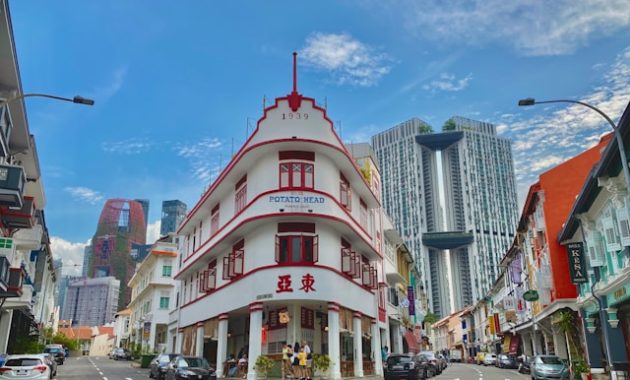
Singapore is known worldwide for its vibrant multiculturalism and cultural diversity. This dynamic Southeast Asian city-state is home to people from a wide range of cultural and ethnic backgrounds, including Chinese, Malay, Indian, and Eurasian communities, creating a unique blend of cultures and traditions. Visitors to Singapore can experience this rich diversity through its neighborhoods, each with its own distinct character and history. In this article, we explore Singapore’s cultural neighborhoods, shedding light on the traditions, architecture, and local experiences that make each area a fascinating place to visit.
The Heart of Chinatown: A Blend of Tradition and Modernity

Chinatown is one of Singapore’s most iconic neighborhoods, where Chinese heritage is celebrated amidst modern urban development. Originally home to the Chinese community, Chinatown is filled with traditional shophouses, temples, and markets that showcase the community’s rich history and cultural identity.
Highlights of Chinatown
- Sri Mariamman Temple: This Hindu temple, despite being in the heart of Chinatown, is Singapore’s oldest Hindu temple. It represents the harmonious coexistence of various religious groups in Singapore.
- Chinatown Heritage Centre: Located in restored shophouses, the Heritage Centre offers insights into the lives of early Chinese immigrants, featuring artifacts, photographs, and recreated rooms.
- Chinatown Street Market: This lively market is filled with food stalls, offering local delights like bak kwa (barbecued meat), dim sum, and traditional Chinese medicine products.
Chinatown’s architecture, vibrant festivals like Chinese New Year, and diverse culinary offerings make it a perfect place to immerse oneself in Chinese culture within Singapore.
Little India: A Celebration of Indian Heritage
Little India is another cultural gem in Singapore, exuding the vibrant colors, sounds, and aromas of India. Known for its authentic Indian food, colorful saris, and traditional temples, Little India provides a full sensory experience that transports visitors to the heart of Indian culture.
Highlights of Little India
- Sri Veeramakaliamman Temple: One of the oldest Hindu temples in Singapore, dedicated to the goddess Kali, this temple features intricate designs and colorful sculptures.
- Tekka Centre: This bustling market and hawker center is a must-visit for food enthusiasts, offering popular dishes like roti prata, nasi biryani, and spiced curries.
- Mustafa Centre: Known for its 24/7 shopping experience, this mall stocks a wide variety of goods, from electronics to spices, offering a taste of India’s retail culture.
- Deepavali Festival: Each year, Little India comes alive during Deepavali (Diwali), the Festival of Lights, with elaborate decorations and lights adorning the streets, making it a perfect time to visit and experience Indian traditions.
With its traditional henna shops, jewelry stores, and Indian restaurants, Little India provides an authentic and memorable journey into Singapore’s Indian culture.
Kampong Glam: The Soul of Malay Culture
Kampong Glam is the historical center of Singapore’s Malay and Muslim communities. This neighborhood is renowned for its Sultan Mosque, Malay eateries, and vibrant street art. Its blend of traditional and contemporary establishments makes it a fascinating neighborhood to explore.
Highlights of Kampong Glam
- Sultan Mosque: The golden-domed Sultan Mosque is an architectural marvel and one of Singapore’s most important religious sites. Its distinctive architecture and historical significance make it a cultural landmark in Kampong Glam.
- Haji Lane: Known for its vibrant murals and boutique shops, Haji Lane is a hub for street art and unique finds, reflecting a contemporary side of Singapore’s Malay culture.
- Malay Heritage Centre: This museum offers a deep dive into the history and culture of the Malay community in Singapore, featuring exhibitions on Malay history, culture, and arts.
- Arab Street: Arab Street is famous for its textile shops, where visitors can find a variety of fabrics, carpets, and other artisanal goods.
During Hari Raya Puasa (Eid), Kampong Glam is adorned with festive decorations, and the area becomes even livelier, reflecting the Malay community’s heritage and traditions.
Joo Chiat and Katong: Peranakan Culture and Heritage
Joo Chiat and Katong are neighborhoods that celebrate Peranakan culture, a unique blend of Malay and Chinese heritage. Known for its colorful shophouses and delicious Peranakan cuisine, this area offers a unique look into the lives and customs of the Peranakan community.
Highlights of Joo Chiat and Katong
- Peranakan Houses: Joo Chiat’s colorful shophouses are a visual treat and a popular spot for photography, showcasing the distinctive architecture of the Peranakan community.
- Peranakan Museum: This museum provides insights into Peranakan history, featuring traditional clothing, jewelry, and artifacts that highlight the unique blend of Chinese and Malay influences.
- Katong Laksa: Food lovers should not miss Katong Laksa, a famous spicy noodle soup that represents the rich culinary heritage of the Peranakan people.
- Baba and Nyonya Shops: These shops offer unique Peranakan goods, including traditional ceramics, clothing, and antiques, reflecting the vibrant culture and history of the Peranakan community.
Joo Chiat and Katong’s charming streets and authentic eateries allow visitors to experience a cultural tapestry that is unique to Singapore.
The Eurasian Community and Katong
The Eurasian community has played a significant role in Singapore’s multicultural landscape, and Katong remains a hub for Eurasian culture. As one of Singapore’s smallest ethnic communities, the Eurasians have a rich heritage that blends European and Asian traditions.
Highlights of the Eurasian Community
- Eurasian Heritage Gallery: This gallery offers a glimpse into the lives, customs, and contributions of the Eurasian community in Singapore, with exhibits covering everything from cuisine to traditional costumes.
- Eurasian Cuisine: Known for dishes like Devil’s Curry and Sugee Cake, Eurasian cuisine is a fusion of European and Asian influences, often featuring spicy flavors and aromatic spices.
- Traditional Music and Dance: The Eurasian community has preserved its own forms of music and dance, contributing to Singapore’s rich artistic landscape.
Though small in numbers, the Eurasian community’s culture is an integral part of Singapore’s diverse social fabric, making Katong a cultural landmark worth visiting.
Singapore’s Multicultural Unity
Singapore’s diverse neighborhoods offer a unique opportunity to experience a variety of cultures within a small geographic area. Each community, while maintaining its traditions and heritage, contributes to the broader tapestry that is Singaporean identity. Singapore has successfully nurtured an inclusive environment where various ethnic and cultural groups coexist harmoniously, making it a shining example of multicultural unity in Asia.
Whether strolling through Chinatown’s bustling streets, admiring the colorful shophouses in Joo Chiat, or savoring the flavors of Little India, exploring Singapore’s neighborhoods offers a deeper understanding of its rich cultural heritage and a glimpse into the diverse lives of its residents. Visitors to Singapore will find not only a cosmopolitan city but also a living museum of cultures, each with its own stories, traditions, and heritage.